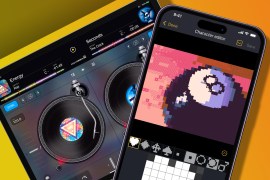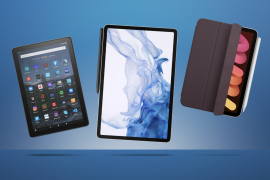Best phones to buy in 2025 reviewed and ranked
The very best smartphones you can buy right now from Apple, Samsung, Google and more

If you’re considering a phone upgrade, you’re in the right place. With so many options available, it can be overwhelming to choose the right one, but our comprehensive guide is here to help. We’ve carefully ranked our favourites below, focusing on the key aspects that matter most to users. Whether you’re eyeing a large-screen Android device or the latest iPhone flagship, we’ve rigorously reviewed the top smartphones on the market.
Our evaluation process is hands-on. We test every smartphone in real-world conditions to ensure it performs well in everyday life. This includes binge-watching series to assess battery life and capturing hundreds of photos to evaluate camera quality. We also push the graphics to the limit with the latest mobile games to measure processing power, and use our experience to rate display quality, design, durability, and software experience.
After this rigorous testing, only the best-performing handsets make it into our guide. Whether you’re after the fastest processor, the best camera system, or the longest battery life, our rankings are designed to help you find the perfect smartphone.
Why you can trust Stuff: Our team of experts rigorously test each product and provide honest, unbiased reviews to help you make informed decisions. For more details, read how we test and rate products.
Quick list: what’s the best phone?
The Apple iPhone 16 (buy now) is the best smartphone you can buy. It’s a pleasing update to a winning formula that’s a much more appealing combo than spending more to go Pro.
The Samsung Galaxy S25 Ultra (buy now) is superlative in almost every respect. Design, display, performance… add on the S-Pen stylus and some clever AI additions, and this is a fantastic all-rounder.
The Google Pixel 8a (buy now) confirms that Google is a master of affordable phones and is a lesson in vanilla Android excellence. A neat design and top-spec camera smarts make it a wallet-friendly winner.
The OnePlus Open (buy now), with streamlined styling, fantastic cameras and slick software, is now the premium foldable to beat. It features a useful 6.3in cover display and a massive 7.82in display when unfolded.
The Google Pixel 9 Pro (buy now) is the ultimate camera phone. It comes with a 50MP main camera, and 48MP wide and telephoto cameras, but it’s not the hard that makes it special – it’s the software. It’s almost impossible to take a bad photo with the Pixel 9 Pro thanks to Google’s clever AI smarts and editing.
The OnePlus 13 (buy now) has one of the best smartphone displays out there. The 6.8in AMOLED display has a 3168×1440 resolution with dynamic refresh rates ranging from 1 to 120Hz.
The Nothing Phone 2 (buy now) has a unique style and plenty of substance. The glyph interface can represent countdown timers, incoming notifications and even how long until your Uber driver will turn up.
The Sony Xperia 1 VI (buy now) includes a 3.5mm headphone port, microSD card slot, and a camera with a variable zoom telephoto lens and plenty of creative control. This is the perfect phone for creatives.
The Samsung Galaxy S24 Ultra (buy now) may have been superseded by the S25 Ultra, but it still packs very capable cameras and plenty of performance. Now outstanding value.
The best smartphones you can buy today:
Best phone overall
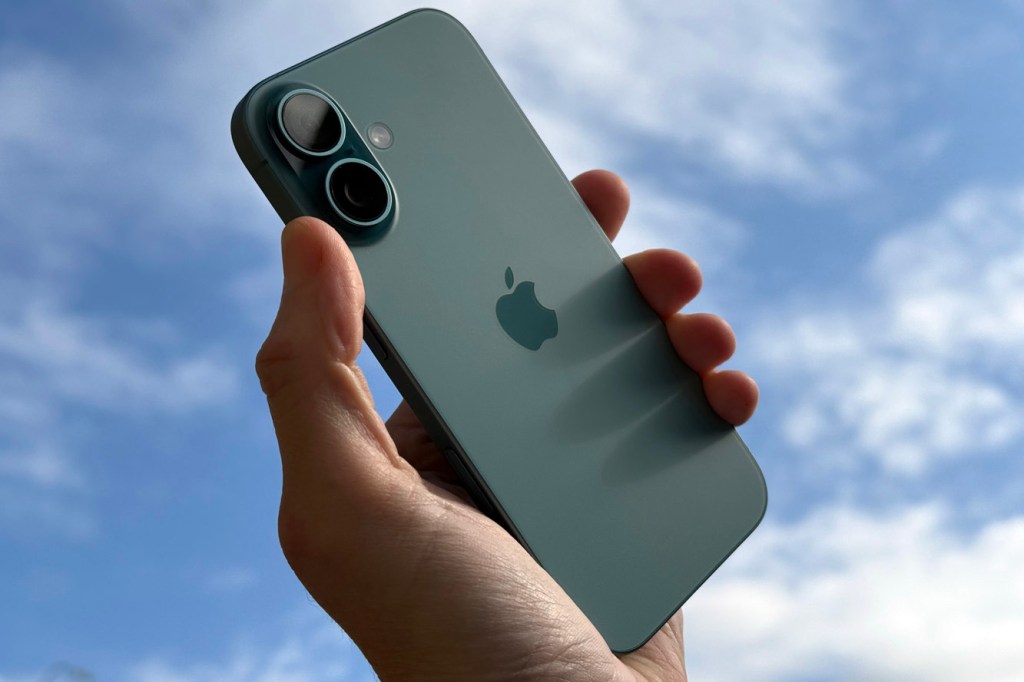
1. Apple iPhone 16
Stuff Verdict
A pleasing update to a winning formula that’s a much more appealing combo than spending more to go Pro.
Pros
- Makes the Pro look poor value
- The telephoto is very welcome
- Great that Camera Control has made it to the standard model as well as the Pro
- Long-lasting battery
Cons
- We’d like some brighter colors please
- No Apple Intelligence at launch
- 60Hz refresh rate is old news
- Camera Control can be fiddly
| Apple iPhone 16 specs | |
|---|---|
| Screen | 6.1in 2556×1179 Super Retina XDR OLED HDR at 460ppi |
| Processor | Apple A18 |
| RAM | 8GB |
| Storage | 128GB/256GB/512GB |
| Software | iOS 18 |
| Cameras | 48MP ƒ/1.6 main, 12MP ƒ/2.2 ultra wide rear; 12MP ƒ/1.9 front |
| Battery | 3561mAh |
| Dimensions | 148x72x7.8mm (5.81 x 2.82 x 0.31 in), 170g (6oz) |
The iPhone 16 stands out as the iPhone to beat in 2024 – it’s the core model that delivers both a satisfying feature set and a more approachable price point compared to the Pro. While the Pro-exclusive 120Hz display is sorely missed, the iPhone 16 makes up for it with a crisp Super Retina OLED and an impressive telephoto camera, finally bringing a 2x zoom lens to the standard model. Camera Control, which lets you open and control the camera app with a customisable button, is a bit fiddly but adds flexibility.
Battery life is another win; thanks to the efficient A18 chip and a slightly larger battery, we’re comfortably getting through a full day, possibly even stretching to midday on day two. Software-wise, iOS 18 brings some slick, if incremental, updates. Customisation options for Control Center and lock screen controls feel like a fresh step forward, even though the highly anticipated Apple Intelligence hasn’t arrived yet – a feature we wish wasn’t tied to a future update.
Overall, the iPhone 16 is an enticing pick for anyone eyeing Apple’s latest. It packs essential upgrades while leaving some Pro exclusives untouched – but, frankly, this model already hits the sweet spot for price and performance. Unless you’re set on a high refresh rate or are sold on the yet-to-arrive AI features, this iPhone nails it. Apple’s strategic tweaks here make the iPhone 16 the clear value champ.
- Read more: iPhone 16 review
Best Android phone
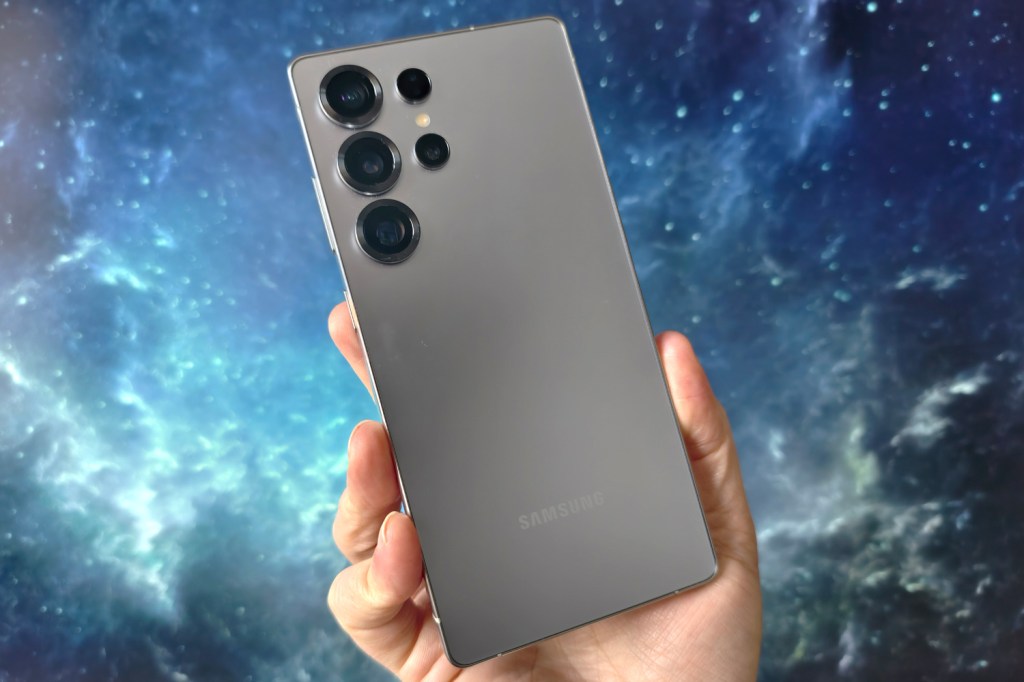
2. Samsung Galaxy S25 Ultra
Stuff Verdict
No massive year-on-year update, but still a fab flagship. Small visual tweaks and a few new internals keep the S25 Ultra compelling as a total package, despite not being a class leader for photography
Pros
- Simply outstanding performance
- Largely unchanged main camera still among the best in class
- Refined design and tougher build
- Galaxy AI finally starting to feel like a cohesive whole
Cons
- Beaten on battery by cheaper rivals using newer tech
- Few meaningful hardware changes from the last-gen phone
- S Pen a downgrade on last year
| Samsung Galaxy S25 Ultra specs | |
|---|---|
| Screen | 6.9in, 3088×1440 AMOLED, 120Hz |
| Processor | Snapdragon 8 Elite for Galaxy |
| RAM | 12GB |
| Storage | 256GB/512GB/1TB |
| Software | Android 15 with OneUI 7 |
| Cameras | 200+50+10+50MP (rear), 12MP (front) |
| Battery | 5000mAh |
| Dimensions | 163x78x8.2mm, 218g |
Samsung’s Galaxy S25 Ultra proves that sometimes refinement is just as important as reinvention. This year’s flagship keeps much of what made the S24 Ultra a fan favourite while introducing meaningful improvements in design, performance, and AI integration. With Gorilla Armor 2 glass for superior durability and reduced reflections, a sleek titanium frame, and a larger 6.9in AMOLED screen that dazzles despite not being the brightest in the market, it’s a stunning device in every sense.
AI enhancements take centre stage, finally delivering a polished, cohesive experience that rivals the best on offer. The new 50MP ultrawide camera adds welcome versatility, while the 200MP primary lens continues to impress with rich detail and vibrant colours. Though the zoom lenses lag behind the competition, they still capture sharp, balanced images.
Wait, how can the very best Android phone only score four stars? Essentially Galaxy S25 Ultra is an iterative update over last year’s S24 Ultra, which can now be had for considerably less cash.
While it may not represent a seismic leap from the S24 Ultra, it excels as a long-term upgrade for Samsung fans ready to take advantage of AI-driven software improvements. Yes, the S Pen’s downgrade and battery limitations are valid criticisms, but the overall experience remains top-tier for those seeking a premium Android device.
- Read more: Samsung Galaxy S25 Ultra review
Best phone for photography

3. Google Pixel 9 Pro
Stuff Verdict
With the Pixel 9 Pro you can finally get the best camera and display tech in a compact 6.3in size. It blends top-tier AI features with a stunning design and exceptional battery life.
Pros
- Premium design and features in a smaller form
- Outstanding camera system with AI editing
- Seven years of software updates
- Excellent on battery
Cons
- Charging speeds still lag behind competitors
- Expensive compared to previous Pixel models
| Google Pixel 9 Pro specs | |
|---|---|
| Screen | 6.3in, 1280×2856, 1-120Hz AMOLED |
| Processor | Google Tensor G4 |
| RAM | 16GB RAM |
| Storage | 128/256/512GB/1TB |
| Software | Android 14 |
| Cameras | 50MP + 48MP + 48MP (rear), 42MP (front) |
| Battery | 4700mAh w/ 27W wired, 21W wireless charging |
| Dimensions | 152.8x72x8.5mm, 199g |
The Google Pixel 9 Pro sets a new standard for Pixel smartphones, offering cutting-edge tech wrapped in a new, more premium design. For those of us who’ve craved a smaller device without compromising on performance, this new Pro model is a game-changer, blending the best camera tech, AI smarts, and an exceptional battery, into the more compact 6.3in size.
The design is great, with straight edges, a matte glass back, and a new pill-shaped camera island that highlights Google’s focus on photography. It feels lovely in hand and is more durable than previous models, with IP68 water resistance and a refined colour palette.
The Actua display is a standout, offering incredible brightness and vibrant colours, even outperforming the iPhone 15 in direct sunlight. Paired with a 120Hz refresh rate, every swipe is buttery smooth. As expected, the camera system is top-tier, especially the upgraded 48MP ultrawide and periscope telephoto lenses. AI-driven tools like Magic Editor make editing photos effortless, while new features like ‘Add Me’ let you appear in group shots post-capture.
However, charging speeds lag behind competitors, and it’s pricier than previous Pixel models. But with seven years of software updates, premium design, and AI-powered performance, we feel the Pixel 9 Pro is a worthy investment for those who want a compact yet powerful flagship smartphone. Google has truly stepped into the high-end space with this one.
- Read more: Google Pixel 9 Pro review
Best phone display
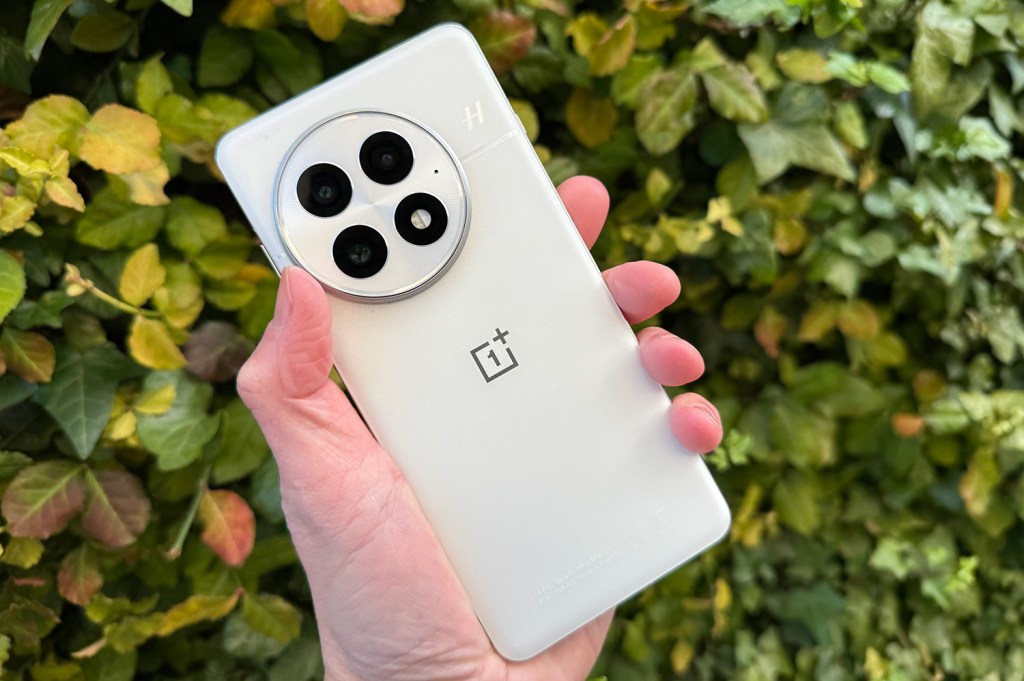
4. OnePlus 13
Stuff Verdict
OnePlus adds some decent updates to what was already a great flagship
Pros
- The screen is absolutely beautiful
- Excellent battery capacity and longevity
- Super-powerful thanks to the Snapdragon 8 Elite
Cons
- Doesn’t have Oppo’s dedicated camera button
- Few colour options
- Needs a 50W wireless charger
| OnePlus 13 specs | |
|---|---|
| Screen | 6.82in 3168×1440 120Hz OLED |
| Processor | Qualcomm Snapdragon 8 Elite |
| RAM | 16GB |
| Storage | 256/512GB |
| Software | Android 15 with OxygenOS |
| Cameras | 50+50+50MP rear, 32MP front |
| Battery | 6000mAh w/ 100W wired, 50W wireless charging |
| Dimensions | 163x77x8.5mm, 213g |
Delivering killer specs at a competitive price point, we think the OnePlus 13 hits another home run. This year’s model doens’t move the game along so much in terms of design, but adds s simply massive battery, the fastest Snapdragon silicon going and a balanced trio of rear cameras. Given the price, it’s hard to argue with.
Its all-screen frontage still fits the modern mould, and the tactile matte back adds a premium feel. The display itself is outstanding, with dynamic refresh rates ranging from 1 to 120Hz, ensuring smooth performance across the board. The trademark alert slider instantly marks it as a OnePlus device, while the Hasselblad branding on the distinctive circular camera bump hints at enhanced photography features.
Performance-wise, the OnePlus 13 is predictably superb, handling everything we threw at it with ease. Battery life was impressively frugal during our tests, and when the 6000mAh cell did run out, the 100W SuperVooc charging had it back to full in just over half an hour. If you’re after a flagship bargain, we believe the OnePlus 13 comfortably undercuts every major big-screen rival.
- Read more: OnePlus 13 review
Most innovative phone

5. Nothing Phone 2
Stuff Verdict
This beautiful big-screen blower has unique style and plenty of substance. Rivals have it beat in one or two areas, but none have Phone 2’s charm.
Pros
- Refines everything that Made Phone 1 so fun
- Dependable performance and battery life
Cons
- Rivals still hold the crown for photography
- Not such great value in certain territories
| Nothing Phone 2 specs | |
|---|---|
| Screen | 6.7in, 2410×1080 OLED, 120Hz |
| Processor | Qualcomm Snapdragon 8+ Gen 1 |
| RAM | 8/12GB |
| Storage | 128GB/256GB/512GB |
| Software | Android 13 |
| Cameras | 50MP+50MP (rear), 32MP (front) |
| Battery | 4700mAh |
| Dimensions | 162x76x8.6mm, 201g |
Nothing has taken everything we loved about its debut smartphone and turned things up a notch. The glyph interface is smarter now, with more LEDs that provide better visual cues for countdown timers, incoming notifications, and even how long until your Uber arrives. The transparent design is also slicker, with slightly curved rear glass that feels more comfortable in the hand and a larger 6.7-inch screen that enhances the viewing experience.
Performance is very respectable for a mid-range phone, powered by last year’s flagship chip. While the camera hardware hasn’t seen significant upgrades, we still noticed improvements in image quality, both in daylight and nighttime settings. However, what truly stands out for us is NothingOS 2.0. It’s a fantastic take on Android, with a consistent and sleek design that prioritizes widgets and user-friendly interactions.
For the price, we find it to be a very tempting alternative to higher-end options like the Pixel 9 Pro or OnePlus 11. If you’re looking for a unique and polished smartphone experience, this one definitely makes a strong case for itself.
- Read more: Nothing Phone 2 review
Best affordable phone
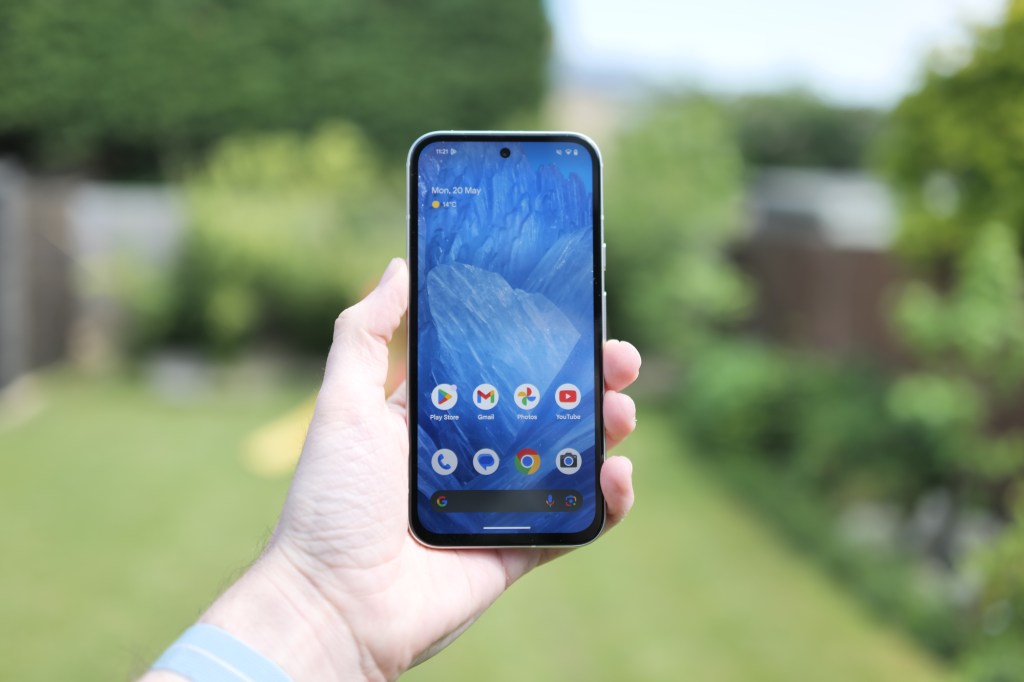
6. Google Pixel 8a
Stuff Verdict
With similar hardware to its more expensive siblings, the Pixel 8a is the cheapest way to access Google’s AI smarts. With amazing photography skills, the Pixel 8a is the mid-range smartphone to beat.
Pros
- Fantastic still images for a mid-range phone
- Performance punches above its price bracket
Cons
- Gemini AI chatbot not available in UK and Europe
- Charging speeds remain behind rivals
| Google Pixel 8a specs | |
|---|---|
| Screen | 6.1in 1080 x 2400 OLED up to 120 Hz |
| Processor | Google Tensor G3 |
| RAM | 8GB |
| Storage | 128GB/256GB |
| Software | Android 14 |
| Cameras | 64+13MP (rear), 13MP (front) |
| Battery | 4,492 mAh w/ 18W wired, 7.5W wireless charging |
| Dimensions | 152.1 x 72.7 x 8.9mm, 188 g |
We’ve long been fans of Google’s affordable phones, and the Pixel 8a only continues that record. While not quite as wallet-friendly as previous generations, this is still as well-rounded a phone and as streamlined an Android experience as you’ll get for the cash. There’s none of the Nothing Phone 2’s snazzy lighting, but the composite shell does a stellar impression of the glass used by its premium cousins. You’re also getting pure Android 14, which the 8a’s Tensor G3 CPU (same as the Pixel 8 Pro) runs without a stutter.
Where the Pixel 8a really excels is in the photography stakes. With powerful algorithms in its arsenal, almost every image it captures is balanced, noise-free and packed with detail. There’s no telephoto, but autofocus is rapid, while the combination of high pixel count main camera and Night Sight smarts pull true-to-life stills from tricky late-night scenes.
The addition of luxuries like wireless charging and a 120Hz refresh rate, missing on the outgoing Pixel 7a, mean you’ll struggle to find a better all-round Android experience for less.
- Read more: Google Pixel 8a review
Best phone for creatives
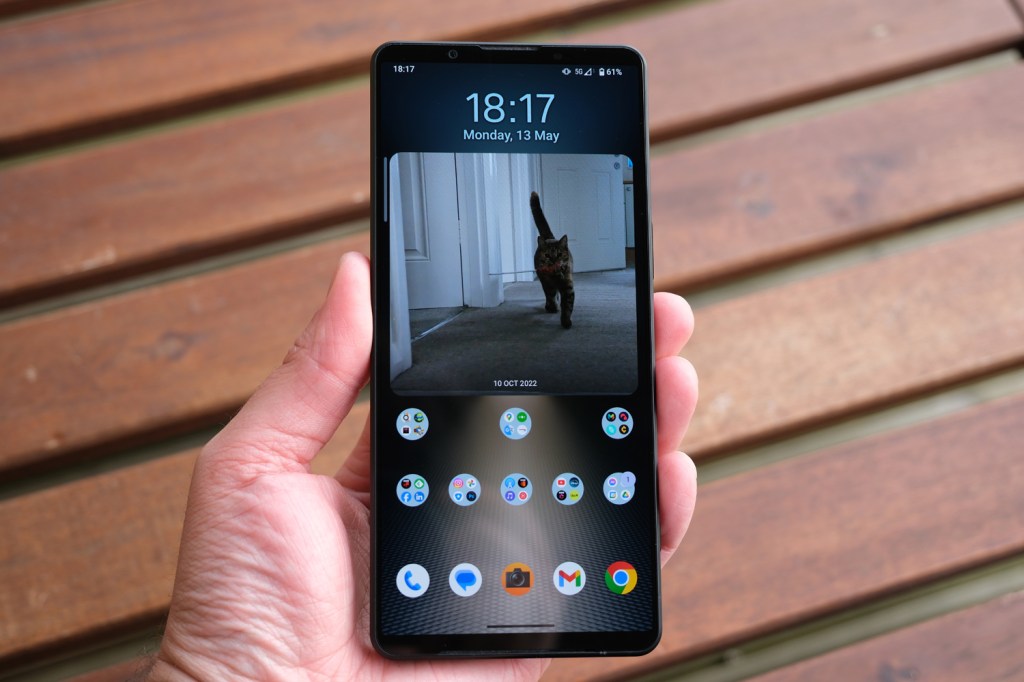
7. Sony Xperia 1 VI
Stuff Verdict
Another ‘best of Sony’ phone that benefits from going slightly more mainstream in a few key areas. The Sony Xperia 1 VI is a fantastic flagship that majors on battery life and entertainment.
Pros
- New screen better competes with rivals
- Strong performance and long battery life
- Wonderfully capable rear cameras
Cons
- No pro video mode at launch
- Rivals still better for point-and-shoot photography – but only just
- Longer software support would be nice at this price
| Sony Xperia 1 V specs | |
|---|---|
| Screen | 2340×1080 OLED w/ 120Hz, 19.5:9 aspect ratio |
| Processor | Qualcomm Snapdragon 8 Gen 3 |
| RAM | 12GB |
| Storage | 256GB |
| Software | Android 14 |
| Cameras | 48+12+12MP (rear), 12MP (front) |
| Battery | 5000mAh |
| Dimensions | 162x74x8.2mm, 192g |
The Xperia 1 VI is as close to a ‘mainstream’ flagship as Sony’s mobile division has spat out in years. It swaps the super-skinny 21:9 screen and overkill 4K resolution of its predecessor for a wider 19.5:9 panel with a Full HD+ pixel count – but it’s absolutely not a downgrade, on account of the higher brightness and 1-120Hz LTPO adaptive refresh rate, which does wonders for battery life.
All the other Sony hallmarks remain, including a 3.5mm headphone port, microSD card slot (which you can get to without having to keep a SIM tray tool with you at all times) and front-firing stereo speakers that really pack a punch. The overall styling is as sharp as ever, too. Underneath, a Snapdragon 8 Gen 3 does all the heavy lifting, and stays wonderfully cool in the process.
On the photography front, Sony has expanded the variable zoom telephoto lens’ range to 7x, helping it better compete with rivals that have 5x optical maximums. It can still handle rapid burst shooting in HDR, with plenty of manual options for serious snappers, but the auto mode has taken a welcome step up for people that prefer to just point-and-shoot. Video creators aren’t quite as well served at launch, though.
It’s a pricey handset, no doubt, but the Xperia 1 VI is easier to recommend to non-Sony fans than any previous iteration.
- Read more: Sony Xperia 1 VI review
Best folding phones
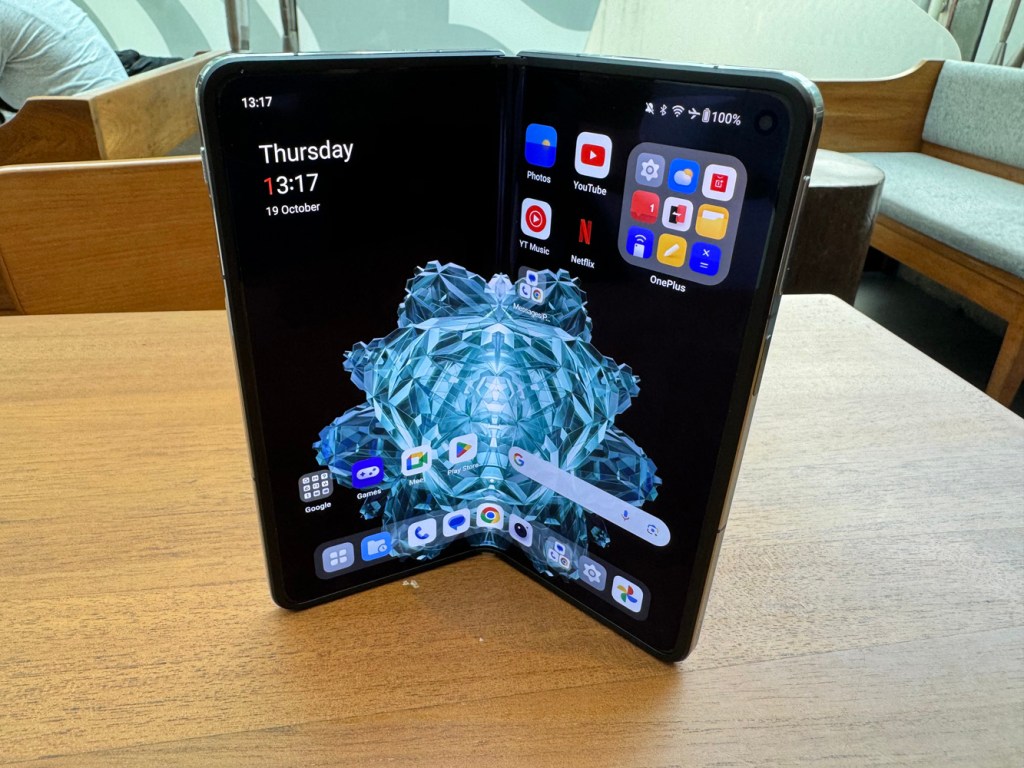
8. OnePlus Open
Stuff Verdict
A brilliant build, capable cameras and some of the best software for multitasking on a foldable phone. The OnePlus Open is the best book-style foldable around, and even costs less than big-name rivals
Pros
- Fabulous build and a high hardware specification
- Brand new camera tech
Cons
- Digital zoom struggles in low light
- Cost, obviously
| OnePlus Open specs | |
|---|---|
| Screen | 6.3in, 2484×1116 AMOLED w/ 120Hz (outer) 7.82in, 2440×2268 AMOLED w/ 120Hz (inner) |
| Processor | Qualcomm Snapdragon 8 Gen 2 |
| RAM | 16GB |
| Storage | 512GB |
| Software | Android 13 w/ OxygenOS |
| Cameras | 48MP + 64MP + 48MP (rear), 32MP (cover), 20MP (inner) |
| Battery | 4805mAh |
| Dimensions | 153x143x5.8mm (unfolded), 153x73x11.7mm (folded), 245g |
It’ll leave a bend in your bank balance, but OnePlus’ first foldable sets a new benchmark for the category. It’s as sturdy and stylish as you’d expect for the price, while only being barely heftier and thicker than a normal handset while folded.
The Snapdragon 8 Gen 2 processor is zippy in the extreme. Top-tier shooting skills come from a trio of clever cameras, with the lead sensor using an all-new stacked design developed by Sony for added low light chops. With colourful OLED tech and 120Hz adaptive refresh rates, the outer panel is as good as you’ll find on any flagship phone. Yet it’s the lesser of the two: the 7.82in screen inside is bright, smooth and vibrant, offering acres of space.
OnePlus has also pulled a blinder with its clever multitasking modes, which let you mix full-screen and split-screen apps with gesture swipes. It’s easily the best we’ve used on a foldable phone. The fact you can grab one for less than either Google Pixel Fold or Samsung Galaxy Z Fold 5 only cements its five-star status.
- Read more: OnePlus Open review
Want more folding phone suggestions? Check out Stuff’s guide to the best folding smartphones.
Best discounted phone
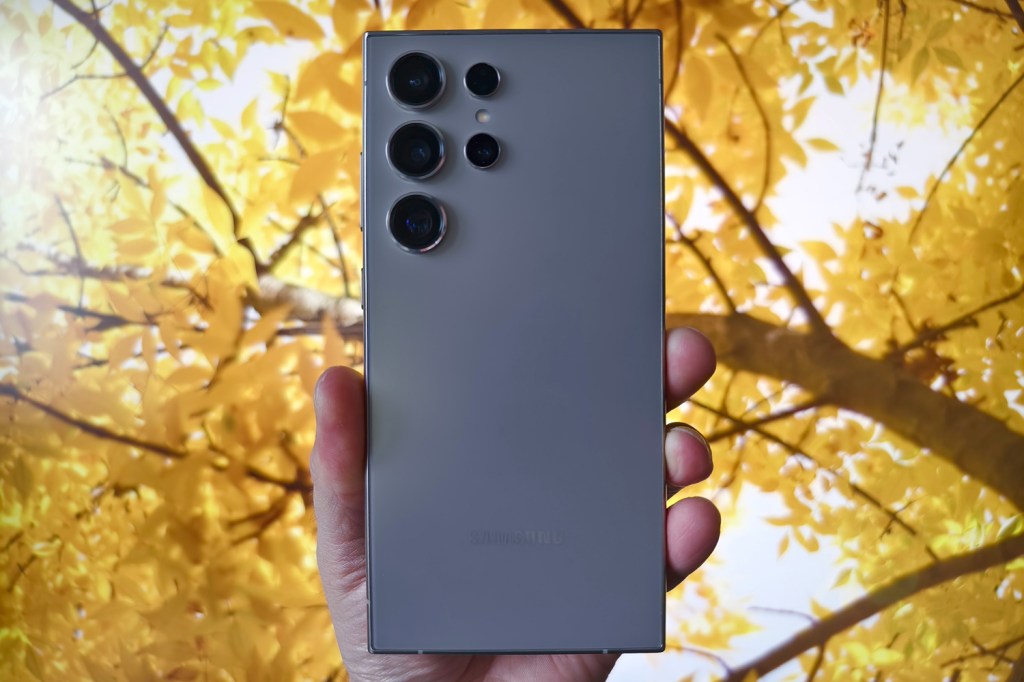
9. Samsung Galaxy S24 Ultra
Stuff Verdict
Productivity that’s unrivalled in the Android world, some very capable cameras and plenty of performance. Superceded by the S25 Ultra now, but only just.
Pros
- Fabulous build and a high hardware specification
- Clever camera tech
- Long software support will keep it current for years
Cons
- Battery capacity and chargign speeds now a bit old hat
- Currently waiting for S25 Ultra’s software upgrades
- Angular design marks it out as the older model
| Samsung Galaxy S24 Ultra | |
|---|---|
| Screen | 6.8in 3088×1440 OLED w/ 120Hz, HDR10+, Corning Gorilla Armor |
| Processor | Qualcomm Snapdragon 8 Gen 3 for Galaxy |
| RAM | 12GB RAM |
| Storage | 256GB/512GB/1TB on-board |
| Software | Android 14 w/ OneUI |
| Cameras | 200MP, f/1.7 w/ PDAF, laser AF, OIS + 12MP, f/2.2 ultrawide w/ PDAF + 10MP, f/2.4 telephoto w/ PDAF, OIS, 3x optical zoom + 50MP, telephoto w/ PDAF, OIS, 5x optical zoom rear. 12MP, f/2.2 front w/ PDAF |
| Battery | 5000mAh w/ 45W wired charging, wireless charging, reverse wireless charging |
| Dimensions | 163x79x8.6mm, 232g |
Sure, it might have been usurped by the newer Galaxy S25 Ultra above, but the Galaxy S24 Ultra is still a cracking smartphone, especially when you take into account its current offers. If you can pick it up at a discounted price, you’re getting almost the same aesthetic and performance of the newer phone, for less.
Admittedly, it’s not rocking rounded corners or truly flat sides. And its ultrawide game is slightly weaker. But apart from that, it’s still plenty powerful, and comes with a cavalcade of S Pen smarts for productivity fiends to lose themselves in. If you’re not fussed about having Samsung’s latest AI software right now, the Galaxy S24 Ultra absolutely will not disappoint — especially now they’re doing the rounds for at least a third off the original retail price.
- Read more: Samsung Galaxy S24 Ultra review
How to choose the best smartphone for you
In order to buy the best smartphone for your needs, there are several important factors to consider. Luckily, Stuff’s smartphone experts are here to help you compare options and make a final decision.
The first big decision you’ll have to make is choosing between Apple’s iOS and Google’s Android operating systems. Both have their own interface, features, and app ecosystem, so if you have a preference or existing devices with potential compatibility issues, then it’s best to stick with what you’re already familiar with.
One of the next things you’ll need to do is set a budget. Smartphones vary widely in price, from as little as $300/£200 to over $1200/£1000. Once you’ve decided on a budget you’ll be able to narrow down potential candidates from our best cheap phone guide, best mid-range smartphone guide, and the best premium phones (this guide).
Once you’ve decided on an operating system and budget, then it’s time to consider things like size, resolution, and quality of the display. If you prefer a more compact phone then you can read Stuff’s guide to the best small phones, or you might prefer a bigger screen which is better for watching videos and reading.
The performance of your smartphone will largely depend on how much you spend, but you should look for a phone with a decent amount of processing power, RAM, and storage capacity (of course, we’ll help you avoid any underpowered phones). This ensures smooth a multitasking experience, and fast app loading.
On a similar note, check the battery capacity and read about the battery life tests in our phone reviews to assess how long the phone typically lasts. You should also look for smartphones with fast charging and wireless charging options, as both of these are very useful.
While all smartphones are pretty good at taking pictures nowadays, if you’re really into taking pictures, then you’ll want one of the best smartphones for photography.
And, finally, if you’re a hardcore gamer, then you should consider one of the best smartphones for gaming. These push performance to the max to take your mobile gaming to the next level.
What is the difference between a mobile phone and a smartphone?
A mobile phone typically refers to any portable device used for telecommunications. It’s capable of making and receiving calls and text messages. It’s a broad term that encompasses, but in today’s language, generally refers to basic feature phones (or ‘dumb’ phones) with limited functionalities.
On the other hand, a smartphone offers advanced computing capabilities and connectivity alongside basic telephony. Smartphones typically have a touchscreen, advanced operating systems (like iOS or Android), and can run apps. They include features like internet access, email, social media, GPS, a camera, and multimedia capabilities.
In essence, while all smartphones are mobile phones, not all mobile phones are smartphones.
How we test the best smartphones
We have used and reviewed every smartphone on this list, so you can trust us when it comes to recommending the best phone to buy. Our extensive hands-on experience with countless devices ensures that we provide reliable and well-informed recommendations. Each phone has been thoroughly tested to ensure it meets the high standards we set for performance, usability, and overall value.
We usually spend a week or longer reviewing phones, immersing ourselves in their daily use to thoroughly evaluate all of the software features, build quality, and performance. This extended period allows us to experience the phone as an average user would, identifying both strengths and weaknesses that may not be immediately apparent. Our testing process is designed to uncover how well the phone performs under various conditions, ensuring our reviews are not just surface-level observations but deep, meaningful analyses.
Our reviews are very comprehensive, covering every single aspect of a smartphone, including battery life, quality of the display, and camera performance. We rigorously test battery longevity under different usage scenarios to provide an accurate picture of real-world endurance. The display is evaluated for brightness, colour accuracy, and resolution to determine its quality. Camera testing includes various lighting conditions and scenarios to assess image and video quality. By thoroughly examining these crucial elements, we aim to give you a complete understanding of each phone’s capabilities, helping you make an informed purchasing decision.
For more information on Stuff’s rating and review process, read our page on how we test products.



